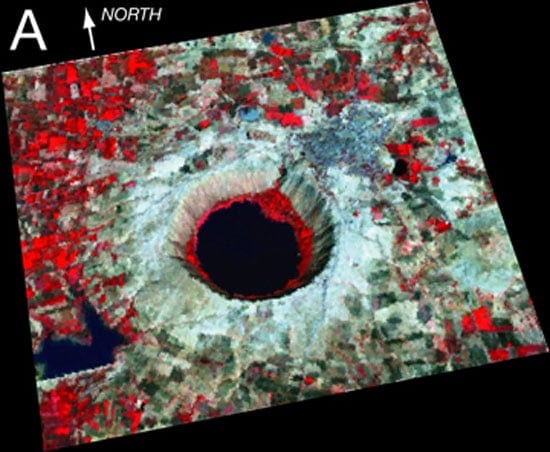Clues in a Crater: From India to the Surface of Mars
January 1, 2006
Researchers from WHOI, Harvard, MIT and Princeton will conduct the second part of an intensive field and laboratory study this month at Lonar Crater in Maharashtra, India, looking for clues about the surface of Mars. Lonar Crater is unique among terrestrial impact sites in that it occurs within a thick pile of basalt roughly the size of the states of Washington and Oregon combined, known as the Deccan Traps, making it an excellent analog for impact craters on the surface of Mars. The crater is 1.8 kilometers (just over a mile) in diameter and about 240 meters (790 feet) deep. The researchers are creating a detailed geologic map of the crater coupled to a three-meter resolution, GPS-derived digital elevation model. During this visit they will conduct a paleomagnetic survey of the crater wall rock and ejecta, the material thrown out from impact or eruption, to understand shock effects on the magnetization of basalt. They will also look at the conditions necessary for the development and the formation of the thick blanket of ejecta.

